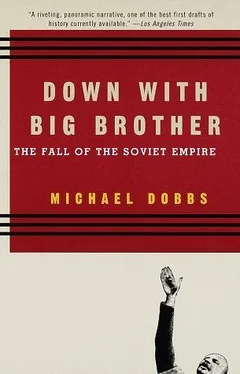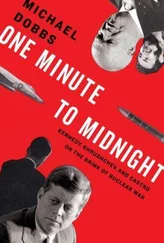The most controversial incidents occurred at the hospital, which had taken dozens of direct hits during the course of the fighting. The basement was full of injured soldiers and civilians. On November 19 the facility was cordoned off by JNA troops and Serb paramilitaries. The United Nations peace envoy, Cyrus Vance, attempted to gain access but was rebuffed by a JNA officer, Major Veselin Slavančinin, commander of the artillery units that had flattened much of the city. 11The major claimed that the hospital was mined, and he could not guarantee the safety of international observers. But both sides agreed that the 420 Croat patients in the hospital would be evacuated to Croatian-held territory.
The following day the Serb soldiers separated two hundred lightly wounded male patients from the other patients. “They ordered anybody who was able to walk to board the buses which were waiting at the back door of the hospital,” recalled Viktor Đurisić, a severely injured Borovo factory worker. “We never saw these people again.” 12
According to eyewitness testimony compiled by United Nations experts, the prisoners were taken to a large building used as a garage for farm equipment in the nearby village of Ovčara. Here they were beaten so severely that at least two men were killed. Serb soldiers then divided them into groups of about twenty men. “One by one, each group was loaded onto a truck and driven away. At intervals of about fifteen to twenty minutes, the truck returned empty and another group was loaded onto it.” 13
Following information provided by a Croat who managed to escape from the truck, UN investigators located a mass grave at the head of a wooded ravine, five minutes down the road from Ovčara. There were hundreds of bullet holes in nearby trees and piles of spent Kalashnikov cartridges on the ground. Roman Catholic crosses and rosary beads found on several exhumed bodies indicated that the corpses were Croat rather than Serb. After examining the site, the experts concluded that the executioners had stood “on the northwest side of the grave [and shot] diagonally toward the southeast and into the trees.” The forensic evidence of a massacre was buttressed by eyewitness testimony. “Since five in the afternoon to one in the morning, we were killing them in Ovčara,” a Serb paramilitary was reported to have boasted, while swigging back plum brandy over breakfast. “They were begging, crying, and pleading that they had not been shooting our people.” 14
Over the next few years many more such atrocities were committed, both in Croatia and in Bosnia. Half a century after the civilized world had learned about the horrors of Auschwitz and Buchenwald and vowed, “Never again,” concentration camps and torture centers were once again established on European soil. Words like “genocide” and “ethnic cleansing” once again entered the vocabulary. By the time a peace agreement was finally reached in late 1995, an estimated quarter of a million people had been killed in the former Yugoslavia, and nearly three million driven from their homes.
The destruction arid killing of Vukovar were repeated, in seemingly endless variations, in Dubrovnik, Tbilisi, Sarajevo, Srebrenica, Dushanbe, Grozny, and dozens of smaller towns and villages across the former Communist world. Vukovar was only the beginning.
WESTERN LEADERS HAD the opportunity—some would say the historical obligation—to step in before the fighting got out of hand. Yugoslavia was, in part, an American creation. President Woodrow Wilson had taken the lead in creating a kingdom of Serbs, Croats, and Slovenes at the Paris Peace Conference in 1919, from the rubble of the Ottoman and Austro-Hungarian empires. After World War II the country had been a key element in the East-West balancing act. The United States extended informal security guarantees to Yugoslavia to forestall a Soviet invasion after Tito had broken away from Moscow in 1948. U.S. officials visiting Belgrade never missed the opportunity to voice support for the country’s “independence, nonalignment, and territorial integrity.”
It had been clear for some time that Yugoslavia was headed for a violent breakup. In October 1990 the Central Intelligence Agency issued a confidential report predicting that the country would fall apart within eighteen months. The CIA believed there was a “high probability” that the policies of nationalist brinkmanship pursued by Milošević and Tuđman would plunge the country into civil war. 15
Instead of acting on these warnings, the Bush administration treated the crisis as a primarily European matter. For most of 1991 President Bush and Secretary of State James A. Baker III had been preoccupied by the Gulf War and the disintegration of the Soviet Union. Accustomed to the geostrategic certainties of the Cold War, they linked the U.S. national interest in Europe almost exclusively to the containment of communism. The Western failure in Yugoslavia was a failure, above all, of political imagination. The collapse of Communist regimes in Eastern Europe had produced a state of false euphoria in Western capitals. There was boastful talk about a “new world order” and “the end of history.” Seduced by their own rhetoric, American policy makers failed to see that nationalism was replacing communism as the principal threat facing the Western democracies and that Yugoslavia would be the first real battleground of the post-Communist era.
Far from coming to an end, history was just getting started again, after a forced hiatus of many decades. The Yugoslav crisis was emblematic of the kind of challenge that would soon become characteristic of the new epoch. Other Miloševićs and Tuđmans were springing up all over the former Communist world. The Cold War was giving way to a new kind of ideological struggle. On one side were those who believed in the American ideal of a pluralistic democracy, based on free markets, free institutions, and free speech. On the other were those who had a political and economic interest in erecting barriers to the free exchange of people, goods, and ideas. By whipping up ethnic hatreds that had lain dormant for decades, the Communists-turned-nationalists were able to perpetuate their own power.
Like communism, nationalism had a natural ability to reproduce itself, until checked by a superior force or brought down by its internal contradictions. It thrived in conditions of economic chaos, offering ready-made scapegoats and ostensibly painless solutions to deep-seated problems. By the end of 1991 the virus of nationalism had spread to large parts of Eastern Europe, casting a shadow over the democratic achievements of the previous two years. The visitor had the impression of traveling back in a time machine to 1945 or 1917. Flags, national symbols, political parties, even street names had been revived—all as they had been before the Communists came to power. It was as if the region had suddenly woken up from a long political hibernation.
In some countries the virus of nationalism assumed a relatively benign form. One such case was Czechoslovakia, where Czechs and Slovaks were able to work out a reasonably amicable divorce. In many other places, however, it was a recipe for fratricidal war. By the fall of 1991 the seeds of future disaster had already been sown in the former Soviet republics of Georgia, Tajikistan, Azerbaijan, and Moldova. In the Caucasus a retired Soviet air force general named Dzokhar Dudayev was busy forming his own sixty-thousand-strong army. Within weeks he was to declare himself president of Chechnya, a country that few Westerners even knew existed.
There was a limit, of course, to what Western governments could do to contain the nationalist genie. America had never shown any interest in the Caucasus. Yugoslavia, however, was another matter. The country straddled a centuries-old geopolitical fault line between Byzantium and Rome, Islam and Christianity, East and West. The United States had already been dragged into two world wars sparked off by conflicts in Eastern Europe. During the Cold War successive American presidents had made clear that they would react vigorously to Soviet aggression in Yugoslavia. If the West was prepared to stand up to the newly resurgent forces of nationalism, then surely this was the place.
Читать дальше












